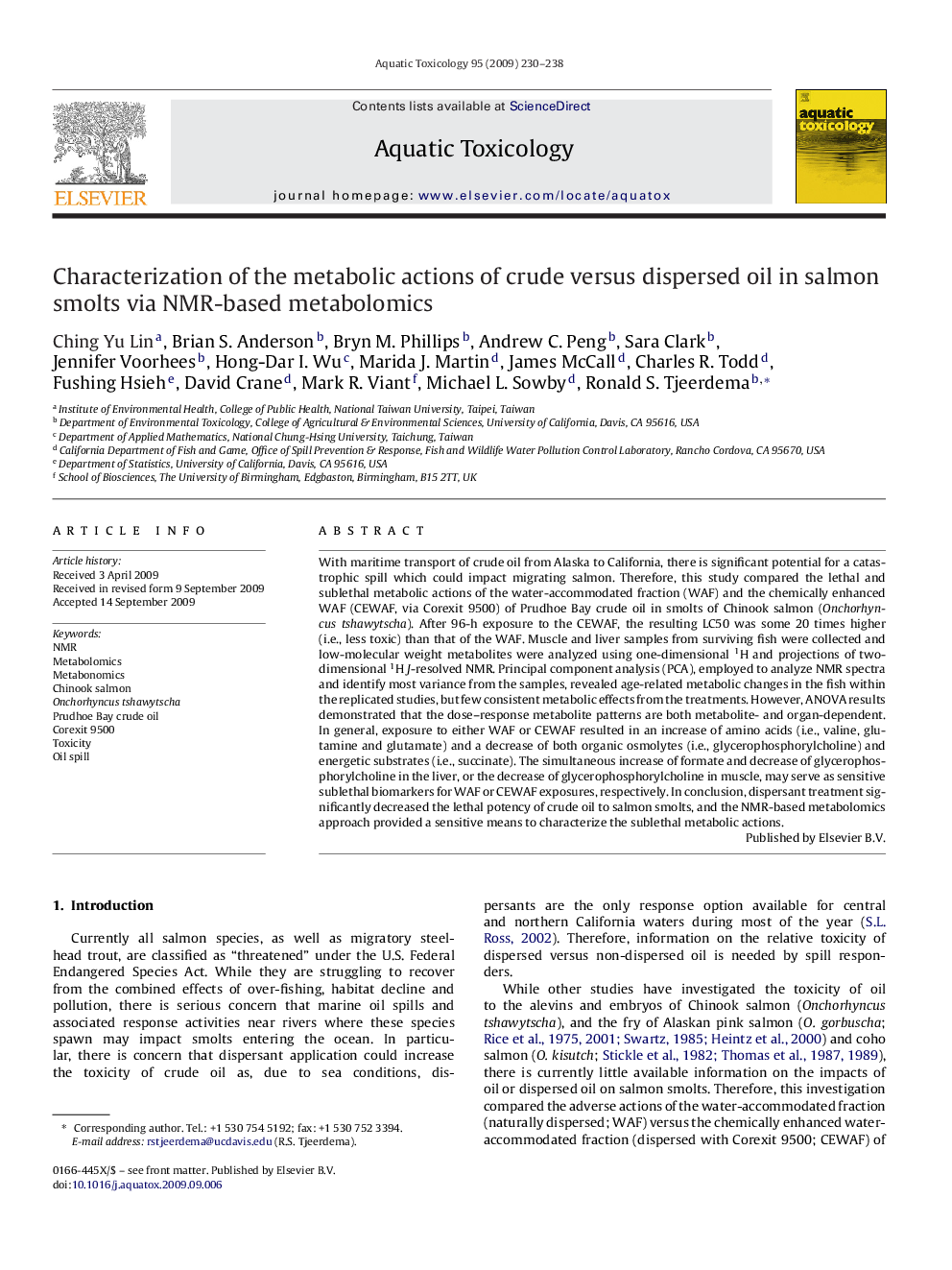| Article ID | Journal | Published Year | Pages | File Type |
|---|---|---|---|---|
| 4530579 | Aquatic Toxicology | 2009 | 9 Pages |
With maritime transport of crude oil from Alaska to California, there is significant potential for a catastrophic spill which could impact migrating salmon. Therefore, this study compared the lethal and sublethal metabolic actions of the water-accommodated fraction (WAF) and the chemically enhanced WAF (CEWAF, via Corexit 9500) of Prudhoe Bay crude oil in smolts of Chinook salmon (Onchorhyncus tshawytscha). After 96-h exposure to the CEWAF, the resulting LC50 was some 20 times higher (i.e., less toxic) than that of the WAF. Muscle and liver samples from surviving fish were collected and low-molecular weight metabolites were analyzed using one-dimensional 1H and projections of two-dimensional 1H J-resolved NMR. Principal component analysis (PCA), employed to analyze NMR spectra and identify most variance from the samples, revealed age-related metabolic changes in the fish within the replicated studies, but few consistent metabolic effects from the treatments. However, ANOVA results demonstrated that the dose–response metabolite patterns are both metabolite- and organ-dependent. In general, exposure to either WAF or CEWAF resulted in an increase of amino acids (i.e., valine, glutamine and glutamate) and a decrease of both organic osmolytes (i.e., glycerophosphorylcholine) and energetic substrates (i.e., succinate). The simultaneous increase of formate and decrease of glycerophosphorylcholine in the liver, or the decrease of glycerophosphorylcholine in muscle, may serve as sensitive sublethal biomarkers for WAF or CEWAF exposures, respectively. In conclusion, dispersant treatment significantly decreased the lethal potency of crude oil to salmon smolts, and the NMR-based metabolomics approach provided a sensitive means to characterize the sublethal metabolic actions.
